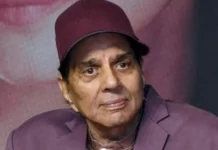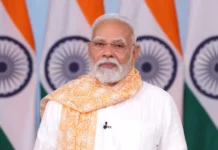 BEIJING: Even as Chinese troops began withdrawing from the Chumar area in Ladakh, the official media here accused India of “instigating” incidents on the borders to divert attention during important visits of Chinese leaders.
BEIJING: Even as Chinese troops began withdrawing from the Chumar area in Ladakh, the official media here accused India of “instigating” incidents on the borders to divert attention during important visits of Chinese leaders.
The Chinese think-tanks also said that India has taken an “offensive” strategy to get more leverage in talks, a day after visiting Chinese President Xi Jinping and Prime Minister Narendra Modi met in Delhi.
Reporting for the first time on the border incident in Ladakh region, state-run Global Times in its report on Xi-Modi talks quoted Indian media reports of the row between Indian and Chinese troops in Chumar area.
Modi raised concerns over the ongoing incident to Xi in Gujarat on Wednesday and it was brought up again during their talks in Delhi yesterday, said the report in the paper known for its nationalistic views.
This is the first time sections of Chinese media reported the incident.
Commenting on the incident, Chinese Foreign Ministry spokesman Hong Lei told a media briefing here yesterday that “with immediate and effective communication, this has been effectively controlled and managed”.
However the Global Times, a sister publication of the ruling Communist Party of China-run People’s Daily quoted an “anonymous Observer” accusing India of “ramping up” tensions near the borders to divert the attention over Chinese leaders visits to New Delhi.
The “anonymous observer”, who specializes in South Asian studies, said that prior to visits to India by Chinese leaders, tensions often ramp-up near the border.
“Last year, ahead of Premier Li Keqiang’s India visit, there was a three-week standoff in the western part of the border,” said the observer stated to be a woman analyst.
It may not be a coincidence, she said, alleging that “some forces in India might want to exert pressure on China over the meeting’s agenda. They don’t want the talks to only focus on trade and economic cooperation, and might want to use it as leverage to press for talks over the border issue.”
She is also skeptical about early resolution of boundary dispute as desired by Modi and Xi during their talks.
Hu Zhiyong, a research fellow with the Institute of International Relations at the Shanghai Academy of Social Sciences, told the daily that Modi has taken a hard line on political and security policies, reinforcing infrastructure on the Indian side of the LAC and upgrading equipment.
“The ‘offensive’ strategy aims to gain more leverage in the talks,” Hu said.
There isn’t “much chance of a settlement of the border issue under Modi and Xi’s regimes,” the observer said.
“Indians have long regarded themselves victims in the border dispute (following the brief war with China in 1962).
It remains in doubt whether Modi will make concessions,” she said.
“For China, while settling the dispute may alleviate concerns that India will side with Japan and the US, it still won’t be a strong enough incentive for concessions,” she said.
“It is not a border dispute alone, as it is intertwined with the Tibet question,” the observer said.
The Global Times also reported the Dalai Lama’s comments that “Tibet’s problem is India’s problem.”
It said Modi has reiterated India will not allow Tibetans to conduct anti-China political activities in the country. He also reaffirmed that Tibet is a part of China, it said.
Also an article by an official think tank in the same paper said India’s stand on border issue is getting tougher.
“New Delhi keeps making efforts in solving the border issue through negotiations. But its stance is getting tougher, and it is brewing new strategic adjustments,” it said.
The border issue certainly does not represent the whole picture of the Sino-Indian relationship, but it is indeed an obstacle that restrains the deepening of bilateral ties, it said.
“Superficially, New Delhi is showing a tougher attitude.
For instance, Modi himself once said ‘No power on Earth can take away even an inch from India.’ And more recently, India’s foreign minister made a public statement about ‘one India’. It seems a natural conclusion that the Modi administration is tending to be tougher on border talks,” it said.
But in fact, such toughness should be understood within the context of India’s domestic political ecology of complex party wrangles. This decides that such toughness, in many occasions, is more symbolic, it said.
“At the current stage, India and China actually have no alternative. They have to continue negotiations over the border issue, and jointly protect peace in the border regions before the issue is ultimately addressed in a peaceful manner,” it said.
“The most controversial zone between China and India contains an eastern part and a western part. The eastern part is Indian-controlled. China dominates the western part, where frequent confrontations between the two armies are witnessed,” it said.
“Why did India only bring up the eastern part (Arunachal Pradesh) when talking about ‘one India’ and not mention the western part at all? Does this mean the Modi administration is now considering more strategic adjustments on this issue? This deserves our close attention,” it said.–PTI






